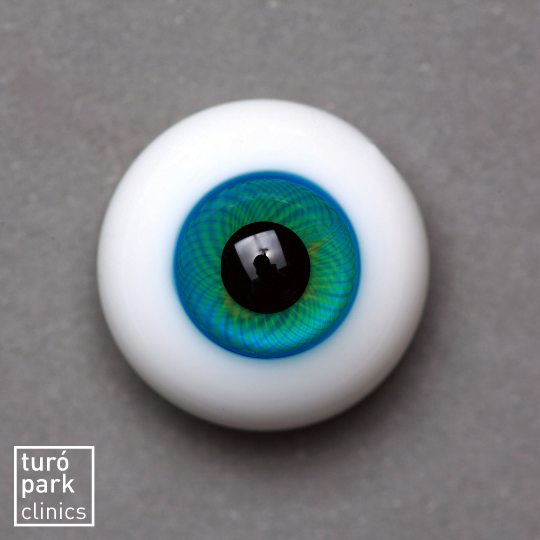Have you lost an eye and would like to have an ocular prosthesis in Barcelona?
Following an accident or illness, it is sometimes necessary to remove the eye (ocular enucleation surgery) or its contents (ocular evisceration surgery, which is the most common). The space left empty is then filled with an artificial eyeball. On the implant, the patient's tissues surrounding the eye are closed and an artificial eye, the ocular prosthesis, is placed over it. In addition to its aesthetic role, this prosthesis is essential for the maintenance of the orbital cavity.
At Turó Park Clinics we are fortunate to have an ophthalmologist and oculoplastic reconstructive surgeon who specialises in ocular prostheses. If you would like to have one fitted or are looking for more information about them, do not wait to make an appointment with him.
Fast-track your treatment!
To make an appointment or speak with one of our team members, please contact us using the options below.

What is an ocular prosthesis?
An ocular prosthesis is a medical device made of synthetic resin that is inserted to fill the void left by a missing, traumatised or atrophied eye. This prosthesis is made to measure in an ocular prosthesis laboratory.
The aim of this ocular prosthesis is to restore a natural appearance to the eye and to give the patient a harmonious look and face. The diversity of shapes and colours offered by the ocularist allow the eye to be reproduced identically to the valid eye.
In what cases is an ocular prosthesis needed?
An ocular prosthesis cannot restore sight, but it does help people to return to social life quickly without having to wear an unsightly bandage or bear the gaze of others.
It is particularly indicated for people who have lost an eye as a result of one of the following situations
- Trauma: road accident, domestic accident, etc.
- Congenital malformation
- Irreversible damage due to inflammatory conditions
- Complications following a surgical operation
- Complications following a disease (herpes, neovascular glaucoma, etc)
What are the steps involved in fitting an ocular prosthesis?

Step 1: The preliminary consultation
The first step of the treatment consists of a consultation with our specialist ophthalmologist. Based on his diagnosis, he will prescribe an ocular prosthesis corresponding to the disease or trauma of your eye.

Step 2: Making the prosthesis
In the second stage, you will have to visit the ocularist (or ocular prosthesist) to have your eye made to measure.
The first appointment is generally devoted to taking eye prints and biometric measurements of the eye.
The last appointment is devoted to the delivery and fitting of the ocular prosthesis.

Step 3: Follow-up
Once your ocular prosthesis is in place, you will need to see your ophthalmologist regularly to check the prosthesis.
If your prosthesis is damaged or worn out, it will be necessary to renew it.
Experience life in colour!
Protect your eyes and avoid eye problems with professional care from Turó Park Clinics.

Our oculoplastic surgeon & ophthalmologist

